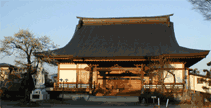  |
Can't read/view Japanese characters?
Try the romaji version instead.
Lesson 17: It wasn't red.
|
This lesson is a continuation of Lessons 14 and 16. Recall that Lesson 14 dealt with い adjectives and Lesson 16 dealt with negative い adjectives. Recall that in order to change an い adjective from affirmative to negative form, one changes the last い to くない. In order to make the past
form of an い adjective, change the last い to かった. Remember
that the negative (ない) form of いi adjectives are also い adjectives,
so you can change them to the past form in the same way. |
|
|
Example: あかい あかくない おもしろい むずかしい |
red not red interesting difficult |
|
|
|
| Examples: かさは あかかった です。 |
The umbrella was red. |
| しけんは むずかしかった です。 | The test was difficult. |
| えいがは おもしろくなかった です。 | The movie wasn't interesting. |
| その ほんは あたらしくなかった です。 | That book was not new. |
| These adjectives can also be used to modify nouns. |
|
|
Examples: あかかった くるま |
a car that was red |
| むずかしかった しけん | a test that was difficult |
| あたらしくなかった えんぴつ | a pencil that wasn't new |
|
|
|
|
Lesson 17 Vocabulary: あかい -かった しけん |
red suffix for past tense i adjectives test (n.) |